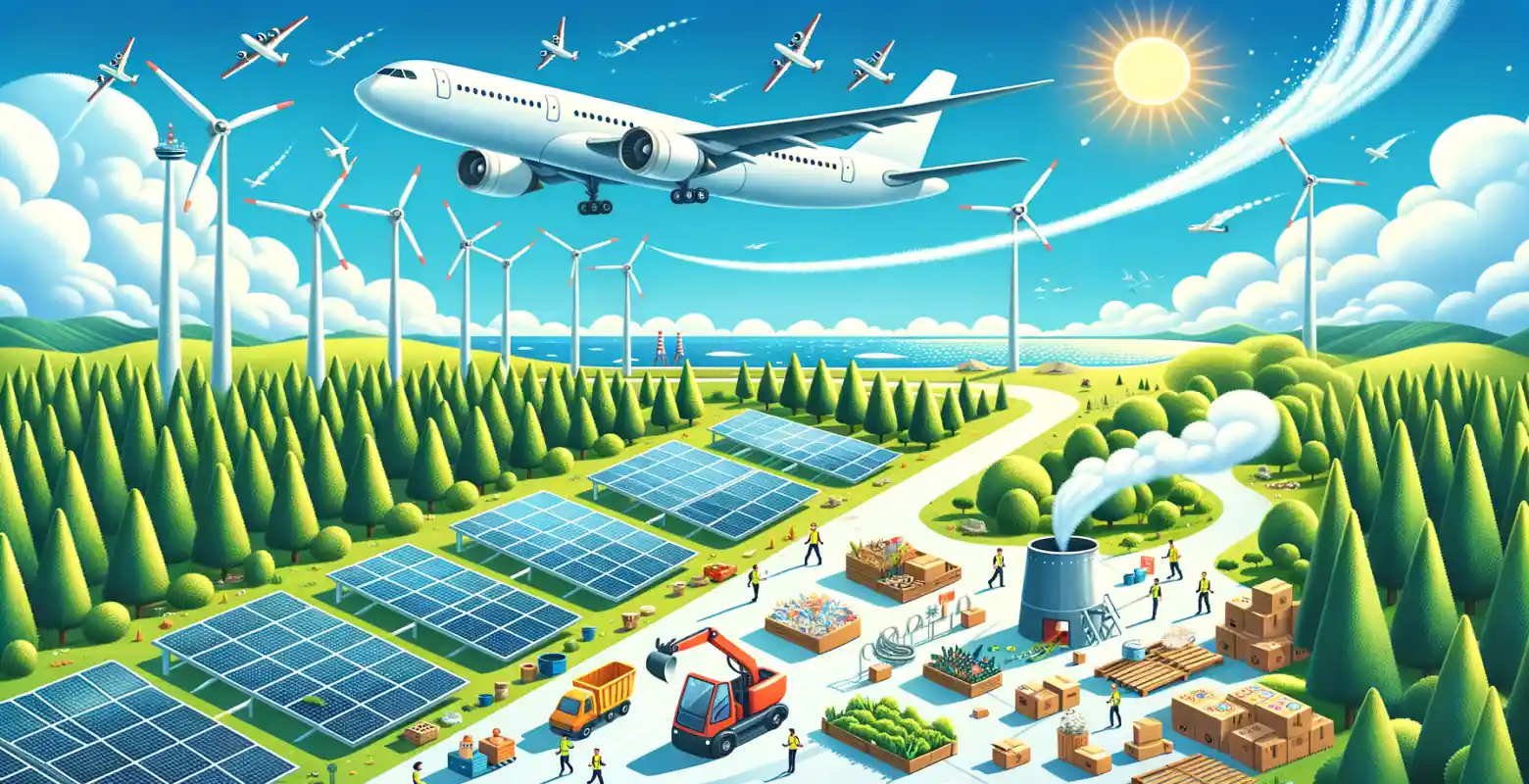How do airlines take care of the natural environment?
Introduction
In the era of growing ecological awareness and global pressure for sustainable development, airlines are under pressure to reduce their impact on the natural environment. Aviation is one of the fastest-growing modes of transportation, leading to increasing greenhouse gas emissions. Therefore, the actions taken by airlines to protect the environment are becoming increasingly important not only for the industry but also for the entire planet. In this article, we will explore how airlines are caring for the natural environment by analyzing various strategies, technologies, and innovations.
Modern Technologies in Aircraft
One of the key ways airlines are trying to reduce their carbon footprint is by investing in modern aviation technologies. Modern aircraft, such as the Boeing 787 Dreamliner or Airbus A350, are designed for fuel efficiency. By using lightweight composite materials, advanced engines, and sophisticated aerodynamic systems, these aircraft consume less fuel per passenger than their older counterparts.
For example, the Airbus A320neo, with improved engines and wingtips, offers fuel savings of approximately 15% compared to earlier versions. Investments in modern aviation technologies are crucial for reducing carbon dioxide emissions, which is one of the main goals of sustainable aviation.
Biofuels and Alternative Energy Sources
Biofuels are another important element of airlines' strategies to reduce emissions. Aviation biofuels, produced from renewable sources such as vegetable oils or organic waste, can reduce CO2 emissions by up to 80% compared to traditional aviation fuel. Airlines like KLM and Lufthansa are already testing biofuels on selected routes.
In addition to biofuels, the future may see the development of other alternative energy sources such as hydrogen or electric aircraft. Although these technologies are still in development, they have the potential to revolutionize the aviation industry and significantly reduce its environmental impact.
Optimization of Flight Routes
Optimizing flight routes is another way airlines can reduce fuel consumption and greenhouse gas emissions. With modern navigation systems and data analysis, airlines can plan the most efficient routes that minimize flight time and fuel consumption.
The SESAR (Single European Sky ATM Research) project in Europe and NextGen in the United States are examples of initiatives aimed at modernizing air traffic control systems, allowing for more precise route planning and better airspace management.
Sustainable Development Initiatives
Many airlines are incorporating various sustainable development initiatives into their strategies. These include emissions offset programs that allow passengers to voluntarily contribute additional fees to projects reducing emissions, such as afforestation or renewable energy development.
Additionally, airlines are investing in education and training for employees, promoting a culture of ecological awareness. These actions help build a positive company image and encourage further steps towards environmental protection.
Challenges and the Future of Sustainable Aviation
Despite numerous initiatives, the aviation industry still faces many challenges related to environmental protection. High costs of implementing new technologies, legal regulations, and the need for global cooperation are just some of the obstacles that must be overcome.
However, the future of sustainable aviation looks promising. Technological progress, increasing ecological awareness, and pressure from consumers and governments for pro-environmental actions can accelerate the transformation of the industry towards a more environmentally friendly model.
Summary
Taking action to protect the environment by airlines is not only necessary but also beneficial for the industry itself and the planet. Through modern technologies, biofuels, route optimization, and other initiatives, airlines can significantly reduce their impact on the environment. The development of sustainable aviation, however, requires the involvement of all stakeholders, including governments, international organizations, airlines, and passengers. Each of us can contribute to a more ecological future through conscious choices and support for pro-environmental actions.






Number of comments: 0